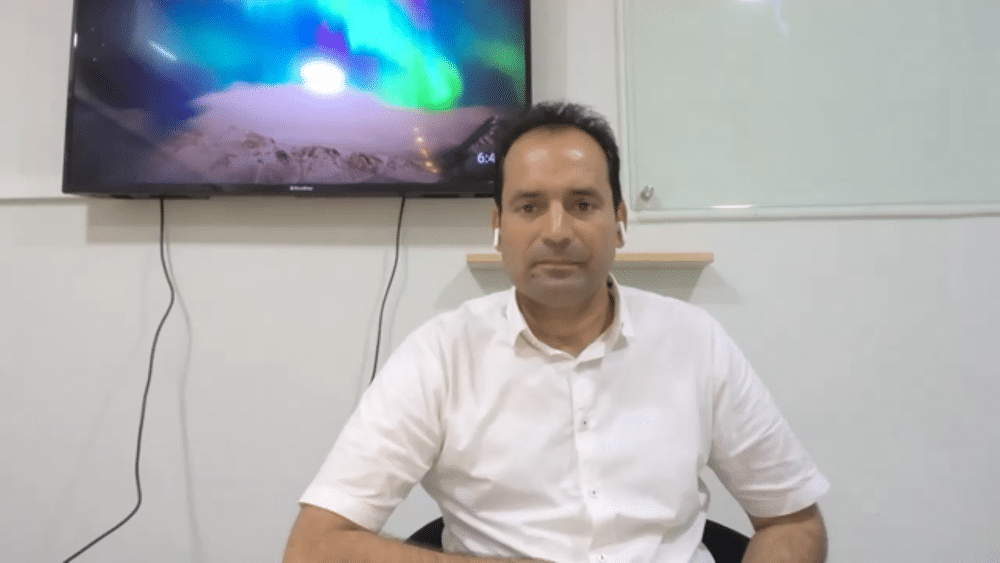A serendipitous discovery that could change the way we combat androgenetic alopecia (male pattern balding) was made during a study investigating the role of a certain sugar in accelerating wound healing. It was found that 2-deoxy-D-ribose (2dDR), found in the human body, not only aids in fighting chronic wounds, such as those found in diabetes, but also stimulates hair regrowth. The results achieved during testing were as effective as one of the currently approved treatments for androgenetic hair loss.
“The problem of androgenetic alopecia is very big. We currently have about 4 billion men, and androgenetic alopecia affects up to 50 percent of them, which gives us a huge number of patients, and we only have two drugs for it. Our discovery, the technology we have developed, gives hope to people suffering from this disease,” said Dr. Muhammad Yar, Assistant Professor in the Interdisciplinary Research Center of Biomedical Materials at COMSATS University Islamabad, in an interview with Newseria Innovations news agency.
The scientists from COMSATS and University of Sheffield discovered that 2dDR, a sugar found in our DNA, could stimulate hair regrowth in mice. The research team primarily investigated how this sugar could aid the healing of wounds by supporting the formation of new blood vessels. However, they noticed that hair around the healing wounds seemed to grow faster in comparison to those which were not treated. The researchers then shifted their focus to studying the effect on hair growth.
“We tried to help patients with diabetes and burns, whose wounds were not healing. Now we are close to developing a product that has approval in Australia for testing on initial patients. After many years, it was time to start talking about developing a model of androgenetic alopecia in mice to test the effect of 2-deoxy-D-ribose on hair regrowth,” says Dr. Muhammad Yar.
The researchers initially injected mice with testosterone and then prepared a gel composed of alginate acid, propylene glycol, phenoxyethanol, and 2-deoxy-D-ribose. They applied this preparation to mice that have been suffering from androgenic alopecia for at least 20 days. The experiment was carried out with two control samples: the positive was given minoxidil—a treatment approved for androgenic alopecia—and the negative was given dihydrotestosterone.
“We observed that the groups treated with minoxidil and 2-deoxy-D-ribose had very good results, and 2-deoxy-D-ribose achieved results just as good as minoxidil. The number of hairs increased and also improved hair diameter and number of hair follicles. Melanin coverage was better in the treatment of 2-deoxy-D-ribose as well, so these were very fascinating results. We were pleased to have tangible results showing 2-deoxy-D-ribose stimulates blood flow to the hair follicles, leading to hair regrowth,” the scientist explains.
Currently, for treatment of androgenetic alopecia, two substances are registered: minoxidil and finasteride. The first is applied topically, the latter orally. Advantages of 2dDR over these treatments, as per the researchers’ perspective, could be its high molecular stability and its high bioavailability, stemming from its natural occurrence in the human body. However, it will take some time before the substance will be tested on humans.
“A bit more lab work is required to establish the mechanism of action of this substance, and then, as always with university research, we need to secure bigger funding and proceed further into work to gain regulatory approvals. When that happens, we can commence testing this therapy on humans. I believe it will be possible in 18 months to two years,” estimates Dr. Muhammad Yar.
Androgenetic alopecia is a genetically determined disorder caused by an excessive response to androgens. According to data published by the National Center for Biotechnology Information, this disease affects up to 50 percent of men and women. It is characterized by progressive hair loss at any time after puberty. While women typically experience hair thinning, men struggle with a receding hairline, making the balding more noticeable. The researchers believe the new method could potentially be useful in treating other types of baldness where hair regrowth stimulation is needed.
